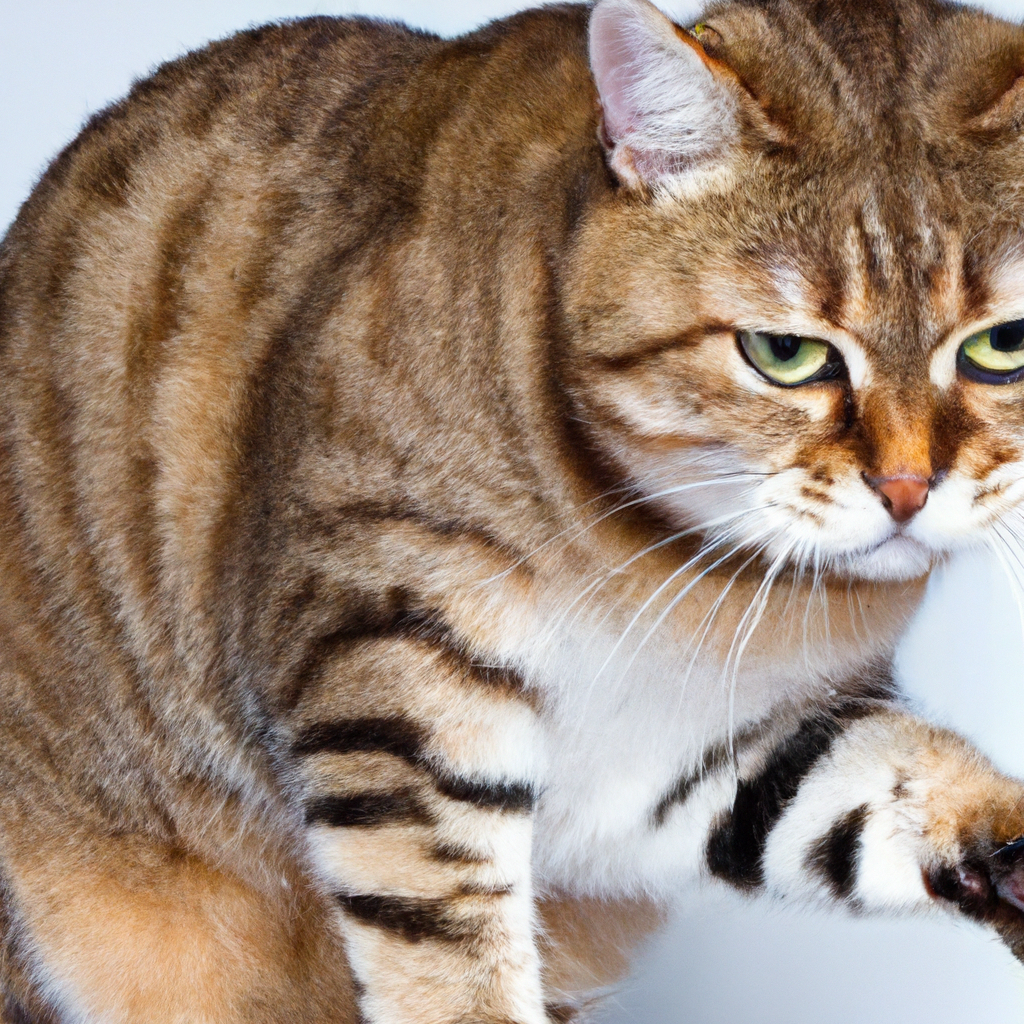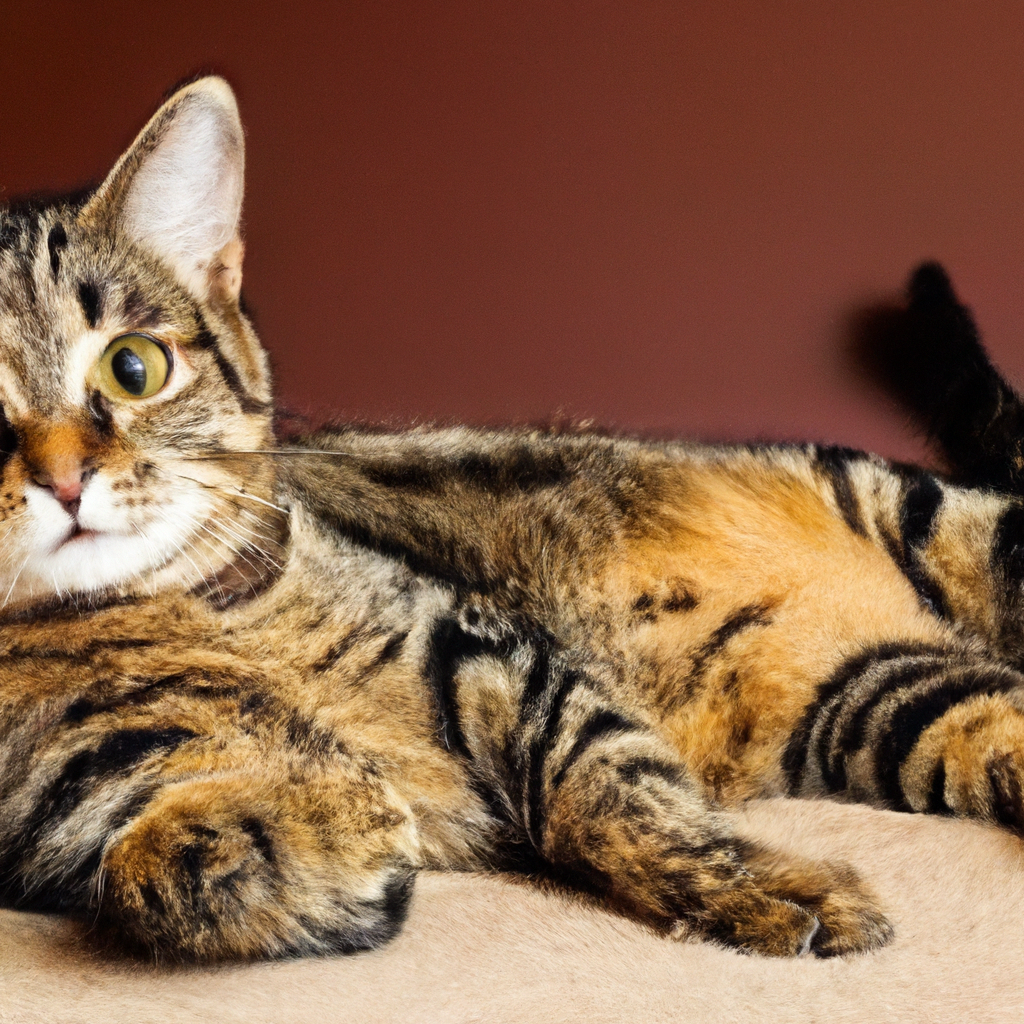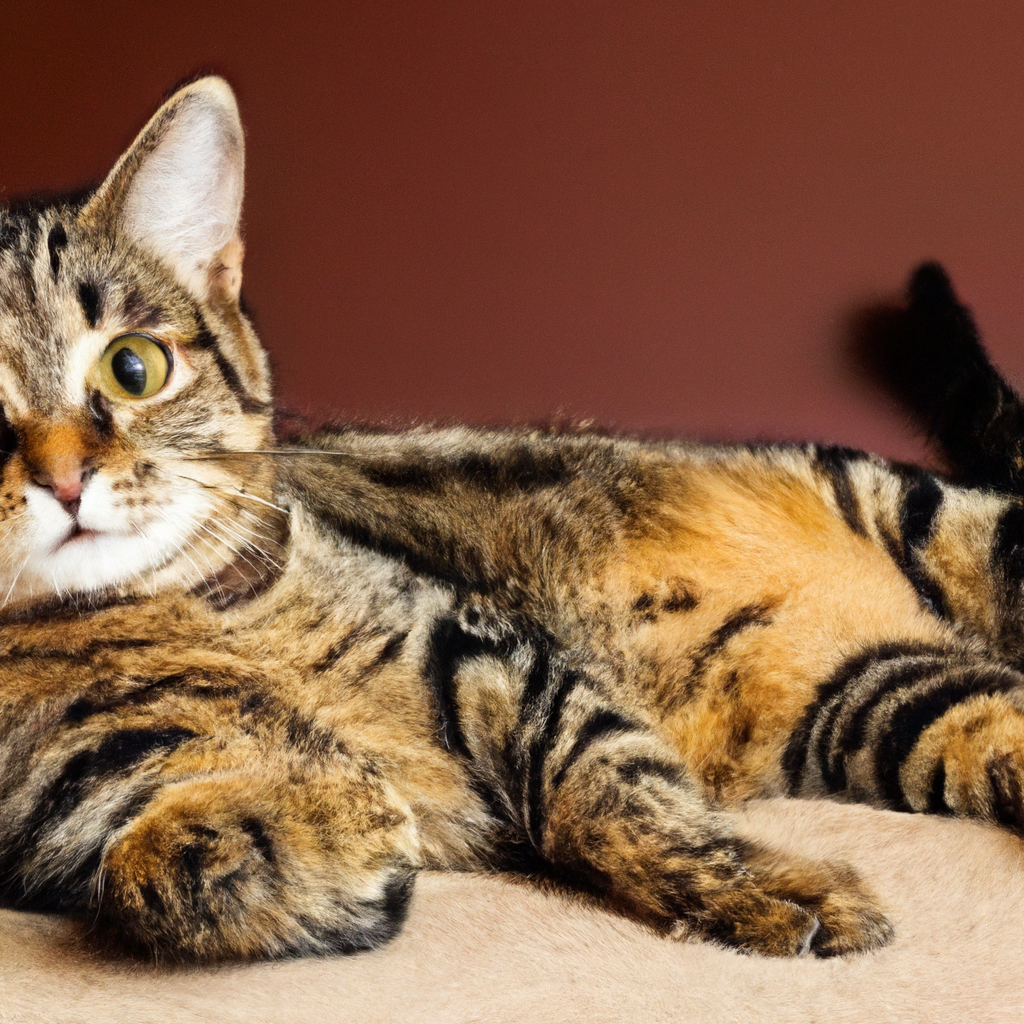Have you ever wondered how long tabby cats live? Tabby cats are beloved for their unique coat patterns and friendly personalities, but many people are unsure about their lifespan. In this article, we will explore the lifespan of tabby cats, providing you with valuable information on their average life expectancy, factors that can influence it, and tips to ensure they live a long and healthy life. Whether you currently own a tabby cat or are considering adopting one, this guide will help you better understand and care for these wonderful feline companions.

Average Lifespan of Tabby Cats
Tabby cats, known for their distinctive coats and charming personalities, make wonderful companions. If you are considering adopting or already own a tabby cat, it is important to understand the factors that can affect their lifespan, the typical lifespan range, and even some record-breaking tabby cats.
Factors Affecting Lifespan
Several factors can influence the lifespan of tabby cats. Genetics play a significant role in determining lifespan, as certain health conditions may be inherited. Additionally, environmental factors such as diet, exercise, and veterinary care can greatly impact a tabby cat’s overall health and longevity. Providing a safe and stress-free environment is also crucial in promoting a longer lifespan for your feline friend.
Typical Lifespan Range
On average, tabby cats have a lifespan ranging from 12 to 16 years. However, it is not uncommon for them to live beyond this range with proper care and attention. It’s essential to note that individual cats may vary, and some may even reach their late teens or early twenties, surpassing the typical lifespan. By prioritizing their well-being and addressing their specific needs, you can help your tabby cat live a long and healthy life.
Record-Breaking Tabby Cats
Throughout history, there have been some remarkable tabby cats that have defied the odds and lived exceptionally long lives. One such cat was Creme Puff, who lived for an astounding 38 years! This incredible feline holds the Guinness World Record for being the oldest cat ever recorded. While such longevity is rare, it serves as a testament to the care and love that can significantly impact a tabby cat’s lifespan.
Healthy Diet and Nutrition
Proper nutrition plays a vital role in maintaining a tabby cat’s overall health and well-being. By understanding their nutritional requirements and establishing a feeding schedule, you can ensure that your tabby cat receives the nourishment they need to thrive.
Nutritional Requirements
Tabby cats require a balanced diet that includes high-quality proteins, essential fatty acids, vitamins, and minerals. Look for cat food specifically formulated for their age and activity level. Avoid feeding them an exclusively human diet, as certain foods can be harmful to cats. Consult with your veterinarian to determine the appropriate diet for your tabby cat’s specific needs.
Feeding Schedule
Establishing a consistent feeding schedule is crucial for maintaining a healthy weight and preventing overeating. Most adult tabby cats should be fed two small meals a day, while kittens may require more frequent feeding. Avoid leaving food out all day, as it can contribute to obesity and other health issues. Ideally, feed your tabby cat at the same times each day to create a routine they can rely on.
Health Risks of Poor Nutrition
Providing your tabby cat with a well-balanced diet is essential to prevent various health risks associated with poor nutrition. Overfeeding can lead to obesity, which can increase the likelihood of developing diabetes, heart disease, and joint problems. On the other hand, underfeeding can result in malnutrition, weakened immune system, and stunted growth in kittens. Always prioritize your tabby cat’s nutrition to support their overall health and longevity.
Importance of Exercise
Regular exercise is crucial for keeping your tabby cat physically fit, mentally stimulated, and emotionally content. Engaging in playtime and ensuring they receive enough physical activity can have numerous benefits for their overall well-being.
Benefits of Regular Exercise
Physical exercise provides numerous advantages for tabby cats. It helps maintain a healthy weight, improves muscle tone, and promotes proper digestion. Regular exercise also aids in reducing stress and preventing behavioral problems, such as aggression and destructive behavior. Moreover, playtime enhances their cognitive abilities and provides an opportunity for social bonding between you and your feline friend.
Recommended Activities
There are various activities you can engage in to ensure your tabby cat gets enough exercise. Interactive toys, such as feather wands, laser pointers, and treat puzzles, can provide mental stimulation while encouraging physical activity. Creating an enriching environment with scratching posts, climbing trees, and hiding spots can also promote exercise and entertainment. Remember to rotate toys and activities to keep them engaged and prevent boredom.
Indoor vs. Outdoor Exercise
While outdoor exercise can provide additional stimulation and exploration opportunities for tabby cats, it may also present risks such as encounters with dangerous animals, exposure to toxins, and the potential for accidents or injuries. Therefore, it is generally recommended to provide supervised outdoor time or create a safe and enriching indoor environment to ensure their safety while still allowing for adequate exercise.
Routine Veterinary Care
Regular veterinary care is essential for maintaining your tabby cat’s overall health, preventing diseases, and addressing any potential health issues promptly. By following a routine care schedule, you can ensure that your feline friend receives the necessary vaccinations, check-ups, dental care, and parasite prevention measures.
Vaccinations
Vaccinations are crucial for safeguarding tabby cats against various infectious diseases. Core vaccinations, such as those for rabies and feline distemper, should be administered as recommended by your veterinarian. Additional non-core vaccinations, such as those for feline leukemia virus (FeLV) or feline immunodeficiency virus (FIV), may be recommended based on your cat’s lifestyle and potential exposure risks. Regular booster shots are necessary to maintain immunity throughout your tabby cat’s life.
Annual Check-ups
Scheduling annual check-ups with your veterinarian is an essential part of proactive healthcare for your tabby cat. These check-ups include a thorough physical examination, weight assessment, and discussion of any changes in behavior or overall health. Routine blood work may also be conducted to screen for any underlying health issues that may not be immediately apparent.
Dental Care
Dental health is often overlooked but plays a significant role in a tabby cat’s overall well-being. Regular dental cleanings, either at home or by a veterinarian, help prevent tartar buildup, gingivitis, and tooth decay. Dental diseases can lead to pain, difficulty eating, and even the risk of systemic infections. Additionally, provide dental-friendly treats and toys to help promote good oral hygiene.
Parasite Prevention
Fleas, ticks, heartworms, and intestinal parasites can pose serious health risks to tabby cats. Regular preventative measures, such as flea and tick control treatments and heartworm preventatives, should be administered as recommended by your veterinarian. Routine deworming treatments can help protect your tabby cat from common intestinal parasites, ensuring their optimal health.

Common Health Issues in Tabby Cats
While tabby cats are generally healthy and resilient, they may still be susceptible to certain health issues. Being aware of these common conditions can help you recognize early signs of illness and seek prompt veterinary attention when necessary.
Obesity
Obesity is a prevalent issue among domestic cats, including tabby cats. Lack of exercise, overfeeding, and improper diet can contribute to excessive weight gain. Obesity can lead to a variety of health problems such as arthritis, diabetes, and cardiovascular issues. Regular exercise, portion control, and a balanced diet can help prevent obesity in tabby cats.
Urinary Tract Problems
Urinary tract issues, including urinary tract infections and blockages, can occur in tabby cats. These conditions can be painful and potentially life-threatening if left untreated. Common symptoms include frequent urination, blood in urine, and straining in the litter box. Prompt veterinary care is crucial to prevent complications and provide appropriate treatment.
Dental Disease
Poor dental hygiene can result in periodontal diseases, such as gingivitis and periodontitis, in tabby cats. Plaque and tartar buildup can lead to tooth decay and gum inflammation, causing pain and discomfort. Regular dental care, including professional cleanings and daily brushing, can help prevent dental disease in tabby cats.
Diabetes
Tabby cats are prone to developing diabetes, a condition characterized by elevated blood sugar levels. Obesity, poor diet, and a sedentary lifestyle can contribute to the development of diabetes in cats. Common symptoms include excessive thirst, increased urination, weight loss, and lethargy. Early diagnosis and appropriate management, including dietary changes and insulin therapy if necessary, can help control this chronic condition.
Hyperthyroidism
Hyperthyroidism is a hormonal disorder that commonly affects older tabby cats. It occurs when the thyroid gland produces an excess amount of thyroid hormone, leading to an increased metabolic rate. Symptoms include weight loss, increased appetite, restlessness, and excessive thirst. Proper diagnosis and treatment, which may include medication or radioactive iodine therapy, can effectively manage this condition.
Feline Leukemia Virus (FeLV)
Feline Leukemia Virus (FeLV) is a contagious disease that can affect tabby cats and other felines. FeLV weakens the immune system and makes cats susceptible to infections, anemia, and various cancers. Symptoms may include weight loss, decreased appetite, and recurring infections. Preventing exposure, either through vaccination or limiting contact with infected cats, is crucial in protecting tabby cats from FeLV.
Recognizing Signs of Illness
Being attentive to your tabby cat’s behavior and physical condition is vital in detecting early signs of illness. Cats are known for their ability to mask their symptoms, so being aware of any changes can help you seek veterinary care promptly when needed.
Behavioral Changes
Any sudden or significant changes in your tabby cat’s behavior can be indicative of an underlying health issue. These changes may include increased aggression, lethargy, hiding, decreased appetite, or excessive vocalization. Paying attention to their normal patterns and behavior can help you recognize potential problems.
Physical Symptoms
Physical symptoms can also provide important clues about a tabby cat’s health. These symptoms may manifest as changes in appetite, weight loss or gain, excessive grooming, hair loss, skin abnormalities, vomiting, diarrhea, or difficulty urinating. Regularly checking your cat’s body for lumps, bumps, or any abnormal growths can also help identify potential health concerns.
When to Seek Veterinary Care
If you notice any behavioral or physical changes in your tabby cat, it is crucial to consult with a veterinarian. While some symptoms may be minor and easily resolved, others may signify underlying health conditions that require immediate attention. Prompt veterinary care can help diagnose and treat any issues effectively, ensuring the best possible outcome for your cat’s health.
Providing a Safe Environment
Creating a safe environment is essential for the well-being of your tabby cat. By identifying potential hazards, preventing accidental injuries, and minimizing stress, you can ensure a secure and comfortable living space for your feline friend.
Toxic Substances and Plants
Tabby cats are curious creatures, and it’s important to keep harmful substances out of their reach. Many common household items, such as cleaning products, certain plants, medications, and even certain human foods, can be toxic to cats. Familiarize yourself with these potential hazards and take necessary precautions to keep your tabby cat safe.
Preventing Accidental Injuries
Accidents can happen, but taking preventive measures can greatly reduce the risk of injuries to your tabby cat. Secure windows and balconies to prevent falls, remove or cover any exposed electrical cords, ensure toxic substances are securely stored, and eliminate any objects that could cause choking or cutting hazards. Regularly inspect your home from your cat’s perspective to identify and mitigate potential risks.
Creating a Stress-free Environment
Tabby cats thrive in calm and stress-free environments. Provide them with a designated space where they can retreat and feel safe. Set up comfortable resting areas, scratching posts, and interactive toys to keep them engaged. Minimize disruptions, such as loud noises or sudden changes in their routine. By creating a peaceful and predictable atmosphere, you can enhance your tabby cat’s emotional well-being.
Spaying or Neutering
Spaying or neutering your tabby cat is an important decision that can positively impact their health and behavior. This surgical procedure has numerous benefits for both male and female cats.
Benefits of Spaying/Neutering
Spaying female tabby cats helps prevent unwanted pregnancies, eliminates the risk of uterine infections, and reduces the incidence of certain reproductive cancers. Neutering male tabby cats decreases the likelihood of roaming behavior, territorial marking, and reduces the risk of testicular cancer. Spaying or neutering also helps control the feline population and reduces the number of homeless cats.
When to Perform the Procedure
Spaying or neutering your tabby cat is typically recommended between four to six months of age, before sexual maturity. However, consult with your veterinarian to determine the best timing for your individual cat, as certain factors, such as their health or breed, may influence the recommended age for the procedure.
Potential Health Risks
The spaying or neutering procedure is generally considered safe, but as with any surgery, there are potential risks. These risks may include complications related to anesthesia, infection, or minor surgical complications. Discuss any concerns you may have with your veterinarian to ensure you make an informed decision regarding the procedure for your tabby cat.
Senior Care for Elderly Tabby Cats
As tabby cats age, they require additional care and attention to maintain their health and quality of life. Recognizing the signs of aging, modifying their environment, addressing special dietary needs, and providing mobility assistance are essential aspects of senior care for elderly tabby cats.
Recognizing Aging Symptoms
As tabby cats enter their senior years, they may show signs of aging. These can include decreased activity levels, loss of muscle mass, joint stiffness, changes in appetite, cognitive decline, and alterations in sleep patterns. Regular veterinary check-ups and vigilant observation can help identify these signs early, allowing you to address age-related issues promptly.
Modifying the Environment
Adapting your tabby cat’s environment as they age can help accommodate their changing needs. Provide easy access to food, water, and litter boxes to make it more manageable for them. Consider adding ramps or steps to help them reach higher surfaces or provide heated beds to alleviate any discomfort from arthritis. Ensuring a safe, comfortable, and easily accessible environment is crucial for promoting a good quality of life for your elderly tabby cat.
Special Dietary Needs
As tabby cats age, their nutritional needs may change. Senior cat food formulas are specifically formulated to meet the needs of older cats, taking into account factors such as reduced activity levels and potential age-related health conditions. Consult with your veterinarian to determine the most suitable dietary plan for your elderly tabby cat.
Mobility Assistance
Older tabby cats may experience mobility issues, such as arthritis or reduced muscle strength. Providing suitable assistance, such as gentle lifting or providing steps for access to elevated areas, can help alleviate any discomfort they may experience. Consider providing soft bedding and orthopedic beds to provide extra cushioning and support for their aging joints.
Emotional Well-being
Ensuring your tabby cat’s emotional well-being is just as important as addressing their physical needs. Social interaction, environmental enrichment, managing separation anxiety, and stress reduction techniques can greatly contribute to their overall happiness and mental health.
Social Interaction
Tabby cats are social animals and thrive on companionship. Spending quality time with your cat through interactive play, grooming sessions, or simply sharing moments of affection can strengthen the bond between you. If your cat enjoys the company of other animals, consider introducing them to a suitable feline companion to provide additional socialization opportunities.
Environmental Enrichment
Creating an enriching environment for your tabby cat can enhance their mental stimulation and prevent boredom. Provide scratching posts, interactive toys, and puzzle feeders to keep them engaged. Rotate toys regularly to keep them fresh and exciting. Consider incorporating vertical spaces, such as cat trees or shelves, to encourage climbing and exploration.
Separation Anxiety
Separation anxiety can cause distress for tabby cats when left alone for extended periods. To minimize separation anxiety, gradually acclimate your cat to your departure routine, provide them with engaging activities while you’re away, and ensure they have access to comforting items, such as blankets or clothing with your scent. If separation anxiety persists, consult with a veterinarian for additional guidance.
Stress Reduction Techniques
Stress can negatively impact your tabby cat’s overall health and well-being. Providing a safe and quiet space for them to retreat to when feeling overwhelmed can help alleviate stress. Other stress reduction techniques, such as using pheromone diffusers, may also prove beneficial. Regular playtime, interactive toys, and positive reinforcement training can further reduce stress and anxiety.
In conclusion, as a responsible owner, it is vital to prioritize the well-being of your tabby cat. By understanding the factors that affect their lifespan, providing a healthy diet and exercise routine, routine veterinary care, recognizing signs of illness, creating a safe environment, spaying or neutering, offering senior care, and supporting their emotional well-being, you can ensure that your tabby cat enjoys a long, happy, and fulfilling life by your side.

